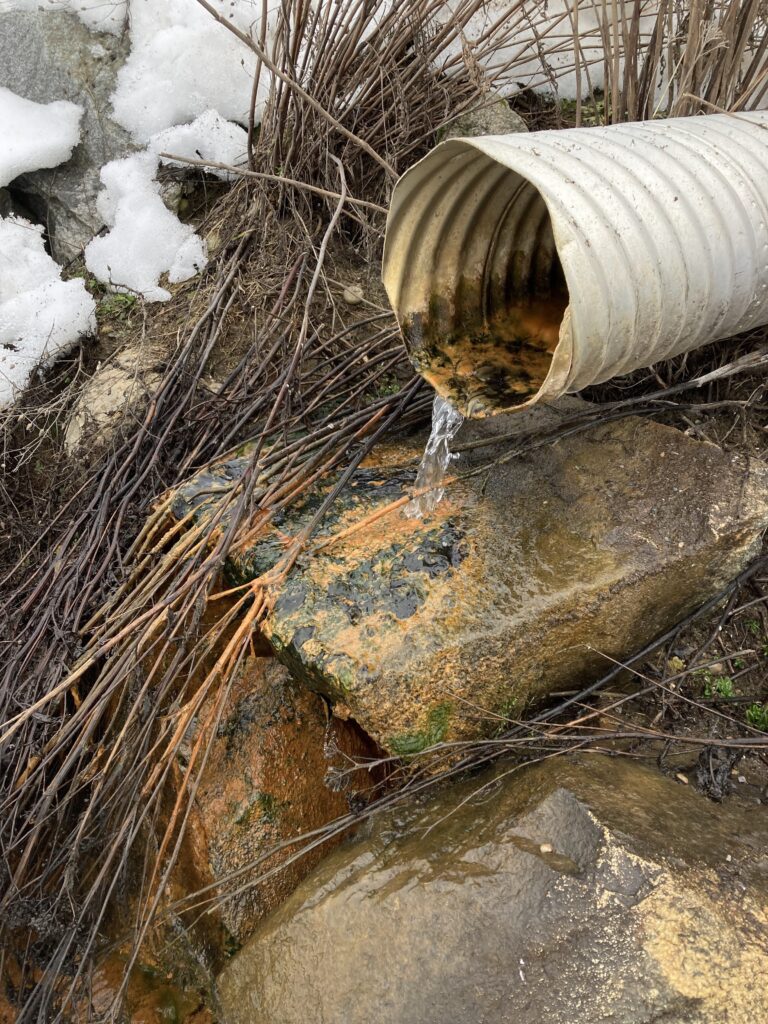Keeping an eye on stormwater pollution
By: Lake Pend Oreille Waterkeeper

By Steve Holt. Originally published by Lake Pend Oreille Waterkeeper, republished with permission.
Stormwater is one of the most significant threats to water quality across the globe. Simply put, stormwater is just what it sounds like: water created by a storm which sheets and/or travels to the nearest large body of water, typically a stream, river, lake, or the end result, the ocean. Water is not only vital to human health and all ecosystems, but is also a great vehicle for picking up hitchhikers such as litter, synthetic chemicals, automobile drippings, and lawn nutrients among a multitude of other pollutants. The better we understand the route water decides to take, the better we can prevent these hitchhikers from doing harm to our precious waterways.
There are a variety of methods for treating stormwater. Mother earth does an excellent job on her own if we just slow the vehicle down; allowing for filtration through the soil and for vegetation to take advantage of some of the nutrients it provides. There are also a variety of mechanical systems that can direct water through filters to accomplish the same task.
Monitoring can be a helpful tool in determining the identity of the hitchhikers and the best management practices that should be used. Very little is understood about the composition of stormwater in our watershed and LPOW does not have the funding to monitor stormwater nearly to the extent we do in the lake. Locally, our stormwater is not treated through mechanical means, hence directing, controlling the speed, and allowing mother nature time to do her job is critical.
There are a variety of laws governing activities that present threats to water quality. Stormwater management regulations, grading permits, and vegetative buffers all play a critical role in protecting our environment. In addition to federal and state regulations, the City of Sandpoint and Bonner County have stormwater ordinances that implement a variety of best management practices; currently both the City and the County are in the process of amending them. Sandpoint is proposing changes to the 25ft vegetative buffer required near Sand Creek and Bonner County is proposing to decrease the current 40ft buffer for all waterways. While these buffers play a critical role in protecting water quality, according to the Idaho Department of Environmental Quality, they are far short of the 200ft recommended to adequately protect the environment.
LPOW is working diligently to ensure these ordinances do not dilute the current limited protections but rather that they are strengthened to provide additional and needed protections. Any time we make adjustments to laws that affect everyone, we are more likely to have successes if a significant quantity of well-informed local citizens participate in the discussion. We will do our best to keep you informed. Please stay tuned-in for Waterkeeper updates and meeting notices from both the city and county.
I wanted to also alert everyone that conversations are again taking place regarding one of the more polluted sites in Sandpoint, the Joslyn property, located on the west side of North Boyer Avenue just north of Super 1 Foods. This property was once home to a facility that treated utility poles with a variety of toxic chemicals that have contaminated soil and groundwater to a depth of at least 30ft. The Idaho Department of Environmental Quality learned of substantial contamination at the site around the year 2000. Even though two consent judgments from the courts have been imposed against Joslyn and the judgments called for commencement of remedial action in 2013, no remedial action has occurred. Current sampling data clearly indicate that a substantial amount of Pentachlorophenol, a toxin and carcinogen, has migrated offsite, across the adjacent vacant lot, and could now be under the Milltown apartment building on 6th Avenue. Additionally, surface water samples collected by LPOW show that contamination is reaching Sand Creek, which is a tributary to the lake. The engineering firm managing the project will be presenting a summary of the Remedial Action Work Plan to the Sandpoint City Council sometime in February; the City and the Waterkeeper will announce the meeting date when it is confirmed. This will be an excellent time to learn more and provide input regarding the remedial design.
We will be talking about stormwater and this project at our Keeping Up With the Waterkeeper event, scheduled for Thursday, February 10th at 5:30pm at the Sandpoint VFW Post, located at 1325 Pine Street. This event is free and open to anyone interested in learning more about stormwater in our watershed. To learn more, check out the event on our website or our Facebook page.